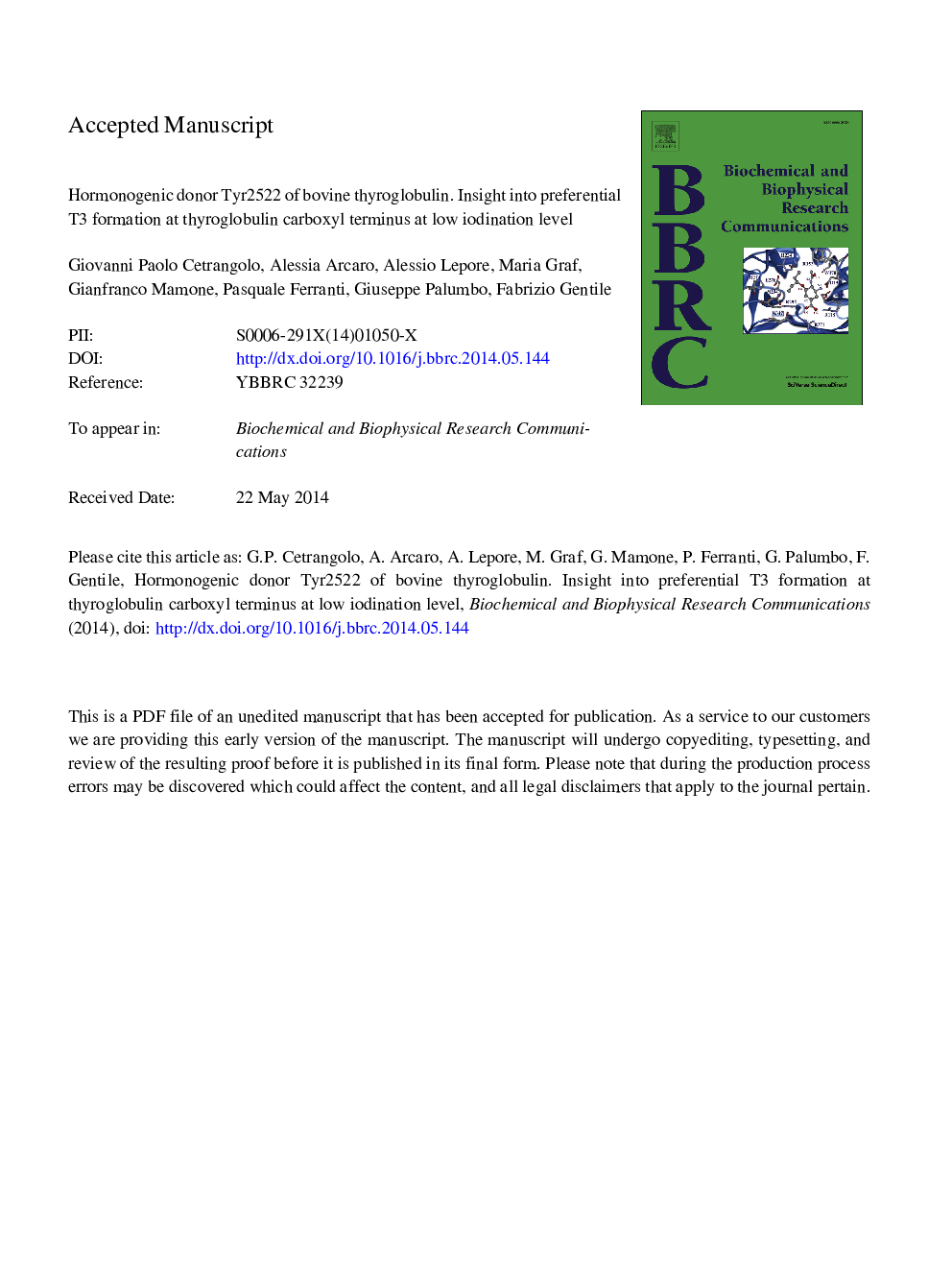| Article ID | Journal | Published Year | Pages | File Type |
|---|---|---|---|---|
| 10754901 | Biochemical and Biophysical Research Communications | 2014 | 24 Pages |
Abstract
A tryptic fragment (b5TR,NR), encompassing residues 2515-2750, was isolated from a low-iodine (0.26% by mass) bovine thyroglobulin, by limited proteolysis with trypsin and preparative, continuous-elution SDS-PAGE. The fragment was digested with Asp-N endoproteinase and analyzed by reverse-phase HPLC electrospray ionization quadrupole time-of-flight mass spectrometry, revealing the formation of: 3-monoiodotyrosine and dehydroalanine from Tyr2522; 3-monoiodotyrosine from Tyr2555 and Tyr2569; 3-monoiodotyrosine and 3,5-diiodotyrosine from Tyr2748. The data presented document, by direct mass spectrometric identifications, efficient iodophenoxyl ring transfer from monoiodinated hormonogenic donor Tyr2522 and efficient mono- and diiodination of hormonogenic acceptor Tyr2748, under conditions which permitted only limited iodination of Tyr2555 and Tyr2569, in low-iodine bovine thyroglobulin. The present study thereby provides: (1) a rationale for the preferential synthesis of T3 at the carboxy-terminal end of thyroglobulin, at low iodination level; (2) confirmation for the presence of an interspecifically conserved hormonogenic donor site in the carboxy-terminal domain of thyroglobulin; (3) solution for a previous uncertainty, concerning the precise location of such donor site in bovine thyroglobulin.
Keywords
Related Topics
Life Sciences
Biochemistry, Genetics and Molecular Biology
Biochemistry
Authors
Giovanni Paolo Cetrangolo, Alessia Arcaro, Alessio Lepore, Maria Graf, Gianfranco Mamone, Pasquale Ferranti, Giuseppe Palumbo, Fabrizio Gentile,
